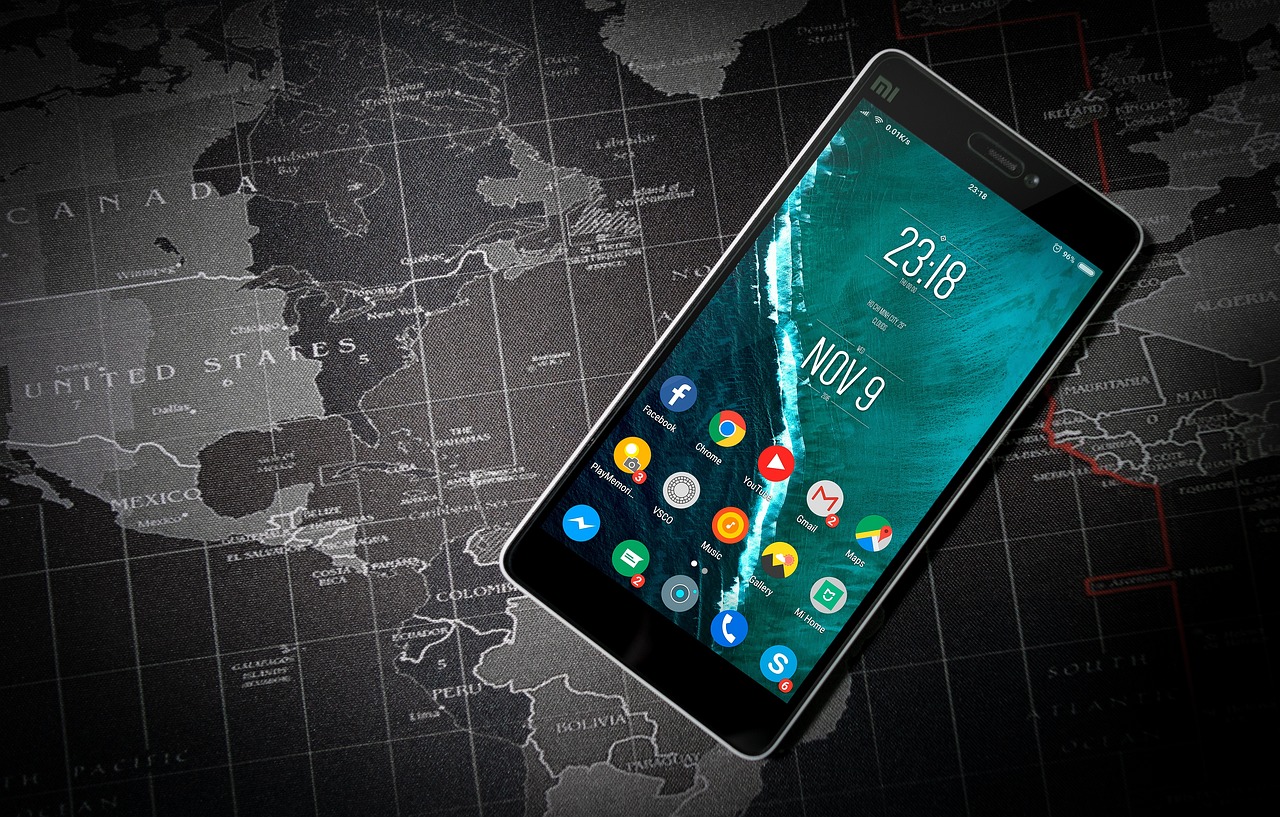The Role of Technology in Enhancing Heritage Experiences
Technology has become a powerful tool in transforming the way individuals engage with and experience heritage sites, museums, and cultural landmarks. By leveraging cutting-edge advancements, technology is revolutionizing traditional methods, offering immersive and interactive opportunities for visitors to connect with history and culture in unprecedented ways.
One of the most impactful applications of technology in this realm is through Virtual Reality (VR) tours. These tours transport users to historical sites through a 3D environment, allowing them to explore and interact with the past in a way that transcends physical boundaries. The immersive nature of VR provides a unique experience that brings history to life right before the visitors' eyes.
Augmented Reality (AR) exhibits are another innovative use of technology in enhancing heritage experiences. By superimposing digital content onto the real world, AR features enrich visitors' understanding and engagement with artifacts and historical objects. Through interactive storytelling and visual overlays, AR transforms static exhibits into dynamic and captivating experiences.
Mobile apps designed for cultural interpretation play a crucial role in providing visitors with personalized and educational experiences at heritage sites. These apps offer detailed information, multimedia content, and interactive maps, catering to diverse interests and learning styles. By utilizing mobile technology, visitors can delve deeper into the history and significance of cultural landmarks at their own pace.
Interactive exhibits and installations further enhance the visitor experience by engaging them in hands-on exploration of heritage themes. Through touchscreens, sensors, and multimedia elements, these interactive displays foster curiosity, collaboration, and experiential learning. Visitors are encouraged to actively participate in uncovering the stories behind the exhibits, creating a deeper connection to the cultural heritage.
3D scanning and printing technologies have revolutionized the preservation and replication of historical artifacts and cultural sites. By digitally capturing and reproducing these treasures, 3D technology ensures broader access, conservation, and study of valuable cultural resources for future generations. This advancement in technology has opened up new possibilities for the preservation of heritage for posterity.
Geolocation and wayfinding systems are instrumental in guiding visitors through heritage sites, providing contextual information, and enhancing navigation. These systems offer location-based content delivery, enriching the storytelling experience while ensuring visitors can easily explore and appreciate the historical significance of each location.
Online collections and digital archives have democratized access to cultural heritage resources by establishing virtual platforms for showcasing collections and artifacts. Through online exhibitions and educational resources, individuals from around the world can explore and research cultural heritage materials, fostering a greater appreciation for diverse histories and traditions.
Artificial Intelligence (AI) technologies are increasingly being utilized in heritage interpretation to offer personalized recommendations, answer inquiries, and provide insights into historical contexts. Chatbots, image recognition, and data analysis tools powered by AI enrich the visitor experience by offering a deeper understanding of the heritage site and its significance.

Virtual Reality Tours
Exploring how technology is revolutionizing the way people engage with and experience heritage sites, museums, and cultural landmarks, creating immersive and interactive opportunities for visitors to connect with history and culture in new ways.
Virtual Reality (VR) tours have completely transformed the way we perceive and interact with historical sites. Through the power of VR technology, users can embark on virtual journeys to ancient civilizations, iconic landmarks, and significant historical events. Imagine stepping into the shoes of a medieval knight, walking through the bustling streets of ancient Rome, or witnessing the construction of the Great Wall of China—all from the comfort of your living room.
These virtual tours offer a 3D environment where users can explore every nook and cranny of historical sites, interact with artifacts, and immerse themselves in the sights and sounds of the past. The level of detail and realism provided by VR technology transcends physical limitations, allowing visitors to experience history in a way that was once unimaginable.

Augmented Reality Exhibits
Augmented Reality (AR) exhibits are transforming the way visitors engage with museum displays and historical artifacts. By integrating AR features into exhibits, museums can provide a dynamic and immersive experience that blends the physical and digital worlds seamlessly. Imagine standing in front of a centuries-old artifact and, through the lens of a mobile device, seeing it come to life with additional information, animations, or interactive elements. This innovative approach to storytelling not only enhances visitors' understanding of the exhibits but also sparks curiosity and fosters a deeper connection to the cultural significance of the objects on display.
One of the key advantages of AR exhibits is the ability to superimpose digital content onto the physical environment, creating a multi-sensory experience that captivates visitors of all ages. Through interactive storytelling and visual overlays, museums can offer a more engaging and educational journey through history. Visitors can explore artifacts from different angles, access additional information, and even participate in virtual reenactments of historical events, bringing the past to life in a way that traditional exhibits cannot match.
Moreover, AR technology allows for personalized experiences tailored to the interests and preferences of individual visitors. By enabling interactive elements such as quizzes, games, or guided tours, museums can cater to diverse learning styles and create memorable experiences that resonate long after the visit. This level of interactivity not only enriches the visitor experience but also encourages active participation and deepens the appreciation for the cultural heritage being presented.

Mobile Apps for Cultural Interpretation
Mobile apps have become essential tools for enhancing cultural interpretation at heritage sites and museums. These applications offer a wealth of features that cater to the diverse interests and learning styles of visitors, providing a personalized and educational experience like never before. By leveraging the power of mobile technology, users can access detailed information, multimedia content, and interactive maps that facilitate navigation and exploration of historical and cultural landmarks.
One of the key benefits of mobile apps for cultural interpretation is the ability to offer users a seamless and immersive experience. Visitors can delve deeper into the history and significance of artifacts, artworks, and monuments through engaging storytelling and interactive features. These apps serve as digital companions, enriching the visitor's understanding and appreciation of the cultural heritage on display.
Moreover, mobile apps enable users to customize their experience based on their preferences and areas of interest. Whether someone is passionate about archaeology, art history, or architecture, these applications provide tailored content that caters to individual curiosities. By offering a variety of multimedia elements such as audio guides, videos, and virtual reconstructions, mobile apps ensure that every visitor can engage with the heritage site in a meaningful way.
Furthermore, mobile apps play a crucial role in promoting accessibility and inclusivity at heritage sites. By providing information in multiple languages, offering audio descriptions for visually impaired visitors, and incorporating features for individuals with disabilities, these applications ensure that cultural experiences are available to a wide range of audiences. Through the power of technology, barriers to engagement are broken down, allowing everyone to participate in and enjoy the heritage experience.

Interactive Exhibits and Installations
Exploring how technology is revolutionizing the way people engage with and experience heritage sites, museums, and cultural landmarks, creating immersive and interactive opportunities for visitors to connect with history and culture in new ways.
Interactive exhibits and installations play a crucial role in enhancing the visitor experience at heritage sites. By incorporating touchscreens, sensors, and multimedia elements, these installations engage visitors in a hands-on exploration of heritage themes. Imagine stepping into a museum and being able to interact with historical artifacts, artworks, and cultural objects in a dynamic and engaging way. These interactive displays foster curiosity, collaboration, and experiential learning, making the heritage experience more memorable and impactful.
One example of interactive exhibits is a touchscreen display that allows visitors to virtually explore the intricate details of a historical artifact by zooming in and rotating it. This hands-on approach not only enhances understanding but also encourages visitors to actively participate in the learning process. Additionally, interactive installations can incorporate gamification elements, turning the heritage experience into an exciting adventure where visitors solve puzzles or complete challenges related to the site's history and culture.
Moreover, these interactive exhibits can cater to visitors of all ages and backgrounds, making the heritage site more inclusive and accessible. By providing a multi-sensory experience that combines visuals, sounds, and tactile elements, these installations create a dynamic environment that stimulates curiosity and creativity. Visitors can immerse themselves in the past, gaining a deeper appreciation for the heritage site and its significance in history.
Furthermore, interactive exhibits and installations can serve as valuable educational tools, offering insights into complex historical concepts in a fun and engaging manner. By combining storytelling, interactive technology, and hands-on activities, these installations transform the traditional museum visit into an interactive journey of discovery and exploration. Visitors not only learn about the past but also actively participate in shaping their own heritage experience.

3D Scanning and Printing
Exploring how technology is revolutionizing the way people engage with and experience heritage sites, museums, and cultural landmarks, creating immersive and interactive opportunities for visitors to connect with history and culture in new ways.
3D scanning and printing technologies have significantly impacted the preservation and accessibility of cultural heritage. By digitally capturing the intricate details of historical artifacts, architecture, and sites, 3D scanning allows for accurate replication and conservation efforts. Through the process of 3D printing, these digital models can be transformed into physical replicas, providing hands-on experiences for visitors and researchers alike.
Imagine being able to hold a precise replica of a centuries-old artifact in your hands, feeling the texture and weight as if you were transported back in time. This technology not only facilitates the study and analysis of cultural objects but also opens up new avenues for public engagement and education.
Furthermore, 3D scanning and printing play a crucial role in democratizing access to cultural heritage. By creating digital archives of fragile or inaccessible artifacts, museums and institutions can share their collections with a global audience, fostering appreciation and understanding of diverse cultures and histories.
Additionally, the ability to reproduce and distribute 3D-printed replicas allows for broader outreach and educational initiatives. Schools, researchers, and enthusiasts can now study and interact with historical objects without risking damage to the originals, promoting learning and exploration in a tangible and immersive manner.
Overall, 3D scanning and printing technologies are transforming the way we perceive and engage with cultural heritage, bridging the gap between the past and the present while ensuring the preservation and dissemination of our shared history for generations to come.

Geolocation and Wayfinding Systems
Exploring how technology is revolutionizing the way people engage with and experience heritage sites, museums, and cultural landmarks, creating immersive and interactive opportunities for visitors to connect with history and culture in new ways.
Geolocation and wayfinding systems play a crucial role in enhancing the visitor experience at heritage sites. By implementing these technologies, heritage institutions can guide visitors effectively, provide contextual information, and offer location-based content delivery.
Imagine wandering through a vast historical site without a guide, feeling lost amidst the grandeur of ancient architecture. Geolocation systems come to the rescue, helping you navigate through intricate pathways and significant landmarks with ease. These systems act as digital compasses, leading you on a virtual journey through time and history.
Moreover, wayfinding systems not only assist in navigation but also enrich the storytelling experience. As you explore a museum or cultural landmark, these systems provide real-time information about the exhibits around you, offering insights and background details that bring the artifacts to life. It's like having a knowledgeable companion by your side, unraveling the mysteries and significance of each display.
Through the integration of geolocation and wayfinding technologies, visitors can delve deeper into the narratives woven within heritage sites. Whether you're tracing the footsteps of ancient civilizations or discovering hidden gems within a museum, these systems enhance the overall journey, making it informative, engaging, and unforgettable.

Online Collections and Digital Archives
Online Collections and Digital Archives play a pivotal role in preserving and showcasing the rich cultural heritage of the world. These digital platforms provide a gateway for global audiences to access and explore a treasure trove of historical artifacts, documents, and artworks from the comfort of their homes. By digitizing collections, heritage institutions can ensure the long-term conservation and dissemination of valuable cultural resources, transcending physical boundaries and reaching a diverse audience.
Through online collections, users can delve into virtual exhibitions that offer a curated selection of artifacts, accompanied by detailed descriptions and contextual information. Digital archives serve as repositories of knowledge, allowing researchers, students, and enthusiasts to conduct in-depth studies and exploration of cultural heritage resources. These platforms not only facilitate learning and research but also contribute to the democratization of culture by making heritage accessible to a global audience.
Furthermore, digital archives enable the preservation of fragile or rare artifacts that may not be on permanent display due to conservation concerns. By digitizing and archiving these items, institutions can ensure their longevity and create a comprehensive record for future generations. Online collections also provide an avenue for collaborative projects, where institutions can share resources and expertise to enhance the collective understanding and appreciation of cultural heritage.

Artificial Intelligence in Heritage Interpretation
Exploring how technology is revolutionizing the way people engage with and experience heritage sites, museums, and cultural landmarks, creating immersive and interactive opportunities for visitors to connect with history and culture in new ways.
Artificial Intelligence (AI) is reshaping the landscape of heritage interpretation, offering innovative solutions to enhance visitor experiences and deepen understanding of historical contexts. By leveraging AI technologies such as chatbots, image recognition, and data analysis tools, heritage sites can provide personalized recommendations, answer visitor inquiries, and offer insights into the significance of artifacts and historical narratives.
Imagine strolling through a museum and having a virtual guide powered by AI that not only shares fascinating stories about the exhibits but also tailors the information based on your interests and questions. AI can analyze vast amounts of data to uncover hidden connections, enriching the narrative surrounding artifacts and historical events.
Moreover, AI-driven image recognition technology can enable visitors to learn more about artifacts simply by pointing their smartphones at them, triggering detailed information and interactive content. This interactive approach to heritage interpretation not only engages visitors on a deeper level but also makes learning about history more accessible and enjoyable.
Frequently Asked Questions
- What is the significance of technology in enhancing heritage experiences?
Technology plays a crucial role in transforming how people engage with and experience heritage sites, museums, and cultural landmarks. By leveraging tools like virtual reality, augmented reality, mobile apps, and interactive exhibits, technology offers immersive and interactive opportunities for visitors to connect with history and culture in innovative ways.
- How do virtual reality tours enhance the visitor experience?
Virtual reality tours enable users to explore historical sites in a 3D environment, providing a more engaging and interactive experience compared to traditional methods. Users can interact with the past, transcending physical limitations and gaining a deeper understanding of the historical context.
- What are some benefits of using augmented reality in museum exhibits?
Integrating augmented reality features into museum exhibits enhances visitors' understanding and engagement with artifacts by superimposing digital content onto the real world. This interactive storytelling approach brings historical objects to life, making the experience more educational and immersive.
- How do mobile apps contribute to cultural interpretation at heritage sites?
Mobile apps provide users with detailed information, multimedia content, and interactive maps to navigate heritage sites effectively. These apps offer personalized and educational experiences tailored to diverse interests, enhancing the overall visitor experience and making cultural interpretation more accessible.
- What role does 3D scanning and printing play in preserving cultural heritage?
3D scanning and printing technologies help digitally preserve and replicate historical artifacts and sites, ensuring their conservation and broader access for future generations. This innovation facilitates the study and exploration of valuable cultural resources while maintaining their authenticity.



















